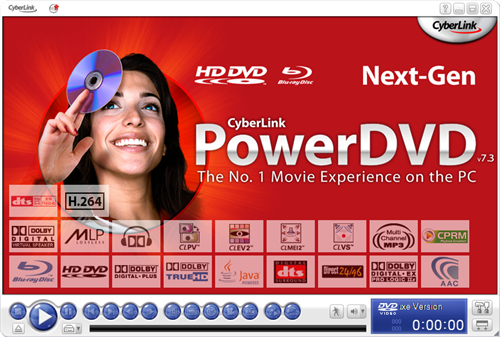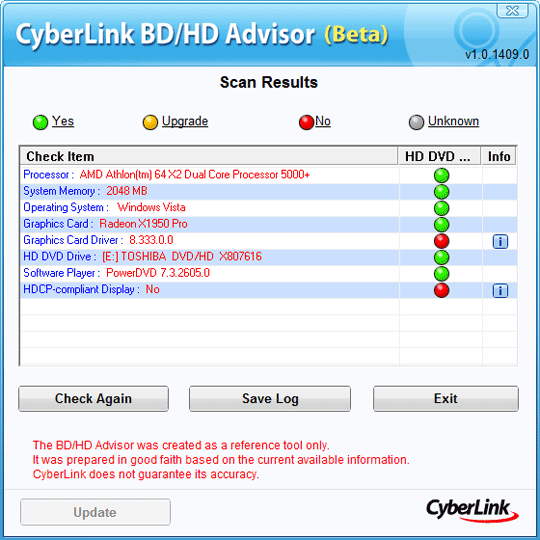How to Play Blu-ray DVDs with Windows
How can I play a Blu-ray DVD on my Windows computer? I know I need a new DVD drive, but what else do I need?"
To play a Blu-ray movie on your computer, there are several things you will need in addition to having a Blu-ray drive. Blu-ray requires fairly robust hardware for smooth playback, so you might need to upgrade some components in your computer. Blu-ray also requires software with the right codecs for playing Blu-ray disks. And if you are connecting an external monitor to your computer, your video card needs to be HDCP compliant in order for Blu-ray playback to work.
Software for playing Blu-ray on Windows
Software for playing Blu-ray is the easy part. Cyberlink PowerDVD plays Blu-ray media. PowerDVD has the bonus of also playing AVCHD camcorder files better than most other software options, so if you have a Canon, Sony, or Panasonic camcorder, PowerDVD will help you playback the movies you record.

Hardware for Windows Blu-ray playback
You need a Blu-ray drive to play Blu-ray discs. You also need to meet additional hardware requirements with your PC. In theory, you simply need a Windows 7-ready machine, but that won't guarantee a perfect experience. Things are further complicated because in addition to needing a beefy processor and plenty of memory, you need a graphics card with very specific characteristics and monitor with HDCP support.
One helpful advantage of Cyberlink PowerDVD is it ships with a tool to help you figure out what components need upgrading in order to have a great Blu-ray experience on your PC.
HDCP Compliant Graphics Cards
The graphics card in your computer needs to be one of the few that support HDCP. Virtually all ATI and Nvidia graphics cards now support HDCP, but you still need to read the specs to make sure yours does. If you have a laptop computer with HDMI, you can safely assume that your computer includes HDCP support, though it won't hurt to double check.

HDCP Compliant Monitors
External monitor support for HDCP remains the biggest gotcha. A monitor with HDMI input will very likely include HDCP support. If your monitor only includes DVI or VGA connections, it may not support HDCP. Updating to the latest version of your graphics card drivers can solve this for the graphics card, but if your monitor is not HDCP compliant Cyberlink PowerDVD Ultra will either display an error message or play back with a black screen (which is the expected behavior for a monitor that isn't compliant).
The easy solution to the monitor problem is to plug your computer into an HDTV screen over either HDMI or DVI. HDTV screens generally ship with HDCP compliance built-in. Finding a true computer monitor with HDCP support is a little more complicated. I tend to prefer Samsung monitors for most things - I've always had great results with their products. Samsung does a lousy job of documenting HDCP support in their monitors.Dell does the best job listing HDCP support, listing this as a feature on virtually every widescreen model in their current product lineup. Again, look for an HDMI input on the monitor as a good indicator that it supports HDCP.
The bottom line here is, if you want Blu-ray playback on your PC, you need to read the fine print to make sure the components you buy will do what you need. Many monitors are starting to support HDCP, but there's still a majority that don't, especially at the budget end of the market. Most integrated graphics cards from AMD and Intel include HDCP support these days, so you may not need to buy a video card to get everything working, though there are many other reasons to have a dedicated video card for better overall video performance.